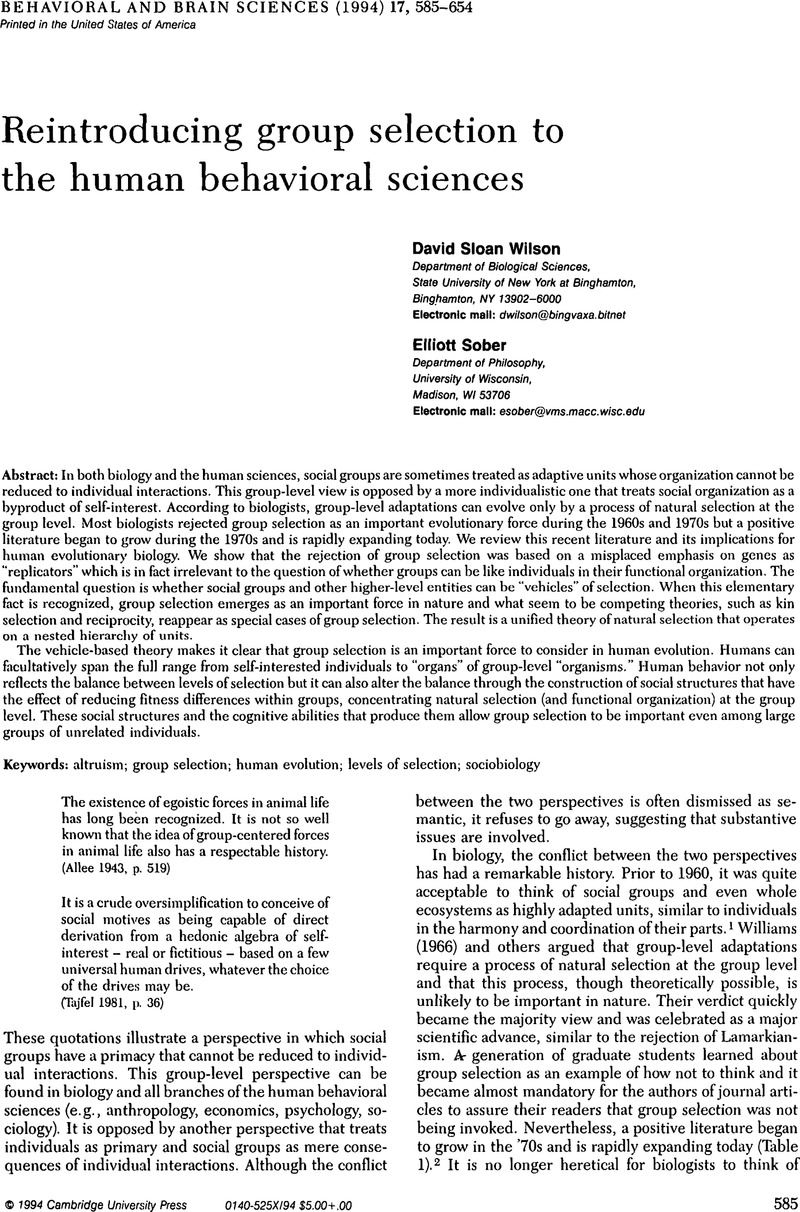Crossref Citations
This article has been cited by the following publications. This list is generated based on data provided by Crossref.
Palmer, Craig T.
Fredrickson, B.Eric
and
Tilley, Christopher F.
1997.
Categories and gatherings: Group selection and the mythology of cultural anthropology.
Evolution and Human Behavior,
Vol. 18,
Issue. 5,
p.
291.



